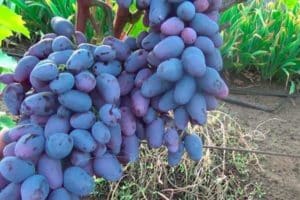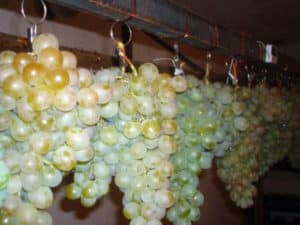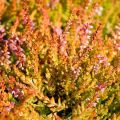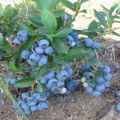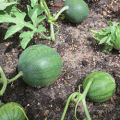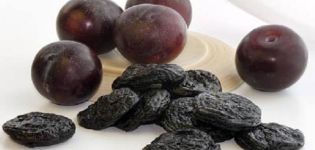Description and technology of growing grape varieties Angelica
Many gardeners want to plant a plot with grape bushes. However, before doing this, you must select a variety suitable for growing. The popular grape variety is Angelica. Before planting such a plant on a site, you need to familiarize yourself with its description and tips for planting and further cultivation.
Breeding history
This grape variety is considered to be relatively young, as it was bred just ten years ago. The plant was bred by the Russian breeder V.N.Krainov, who named the resulting type of grape Angelica. When creating the plant, varieties such as Radiant Kishmish and Talisman were used. These plants are poorly protected from frost and therefore Angelica is recommended to grow in the southern parts of Russia, Belarus and on the territory of Ukraine.
Description and characteristics of the variety Angelica (Xenia)
Before planting, it is recommended that you familiarize yourself with the characteristics and description of the grape variety.
Bunches and berries
A distinctive feature of the bushes is their tallness. With proper care, each seedling grows up to two and a half meters. Angelica's vine grows quickly and therefore it must be regularly thinned and pruned. Without pruning, the berries formed on the plant will ripen worse.
Experts recommend pruning the variety at least three times per season.
The bunches have a conical shape, they weigh an average of one and a half kilograms. However, sometimes larger clusters form on the bushes. They are a little loose and tend to pea if not properly looked after. Ripe Angelica berries are quite large, they have an oval and oblong shape. Each grape weighs about 30-35 grams. The berries have a pleasant taste with a slight nutmeg aroma. Moreover, the sugar content does not exceed twenty percent.
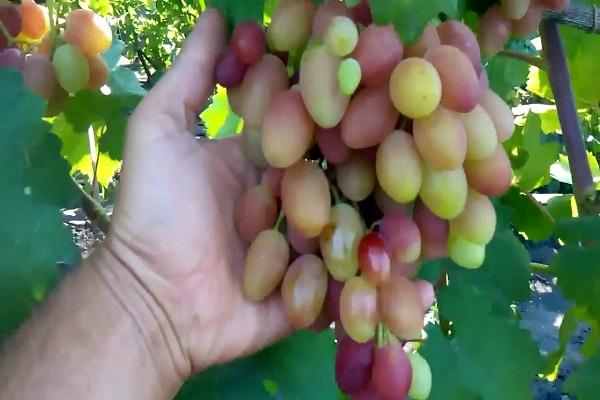
Resistance to frost and disease
Angelica cannot boast of frost resistance and therefore should not be grown in the northern regions.
However, it is resistant to many diseases, so it rarely gets sick with powdery mildew or gray rot.
Advantages and disadvantages
Angelica has certain advantages and disadvantages that should be familiarized with before boarding. Among the advantages of the variety, the following are distinguished:
- large bunches with berries;
- dense peel with excellent transportability;
- self-pollination;
- fast ripening of the crop.
The disadvantages of the plant include:
- poor resistance to frost;
- the need for regular pruning.
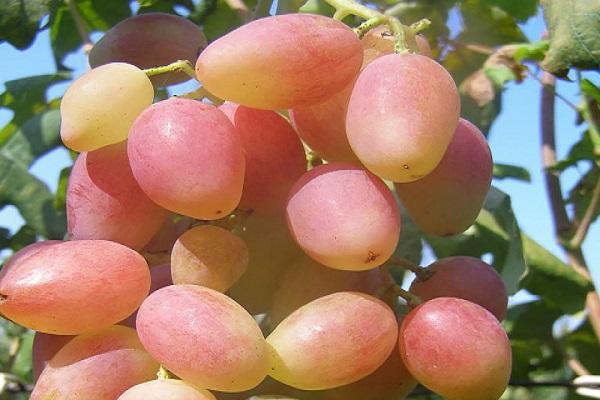
Cultivation of culture
To properly grow Angelica, you need to read the tips for growing her.
When to plant
First you need to figure out the optimal timing of planting grape seedlings. Some gardeners plant the variety in the fall. However, in this case, one must be very careful, as frosts may begin at any moment. Therefore, it is better to postpone planting in the spring, after the end of the winter cold. Planting is done in late April or early May.
Selecting and preparing a landing site
Having decided on the timing of planting, they are engaged in the choice of a seat. Vineyards thrive in well-lit areas that are not heavily windy. The selected area is prepared in advance. In the process of preparation, they dig it up, fertilize it with organic fertilizers with mineral components.

How to plant correctly
Planting begins by creating a planting hole in which the seedling will be planted. Its dimensions should not exceed forty centimeters in depth and in width. The bottom of the dug hole is covered with top dressing mixed with soil. Then a grape seedling is planted in the pit, which is carefully covered with soil and moistened with water.
Plant care
The planted seedlings must be properly cared for in order to maintain their yield.
Watering and fertilizing
Angelica is considered a moisture-loving variety and therefore it must be regularly watered with water. If a hose is used during irrigation, the procedure will have to be carried out in the evening or morning. Warm water is used for watering. Do not use a cold one, as it will damage the root system.
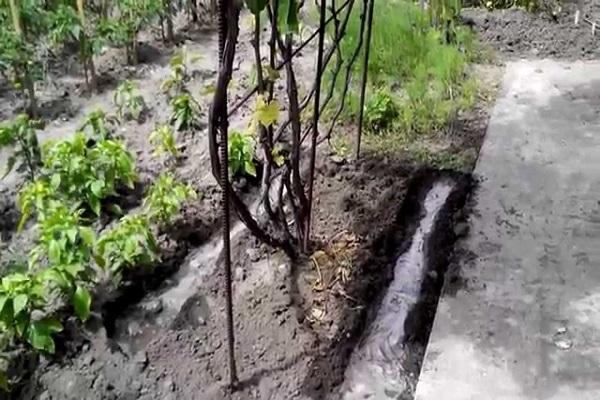
Pruning
An important element of viticulture is the pruning of planted seedlings. Experts advise pruning regularly to get rid of stalks that are not bearing fruit. Excess stems are cut with sharpened garden shears. It is contraindicated to manually break off the branches.
Preparation for wintering
To protect the vineyard from the cold wind or frost, it is necessary to build an insulating shelter. To do this, the base of the bushes is tightly covered with dried grass, fallen leaves or dry tree twigs. The shelter is cleaned in mid-spring when the temperature rises to 5-10 degrees Celsius.
Diseases and pests
To protect the variety from pests and diseases, it is periodically sprayed with the following means:
- Thanos;
- inkstone;
- bordeaux mixture.
Spraying is carried out in the evening or in the morning.

Harvesting and storage
By mid-August, all the grapes will be fully ripe and can be harvested. The harvested crop is stored for a long time only if it is in a cool place. Therefore, do not leave cut brushes in the sun for a long time.
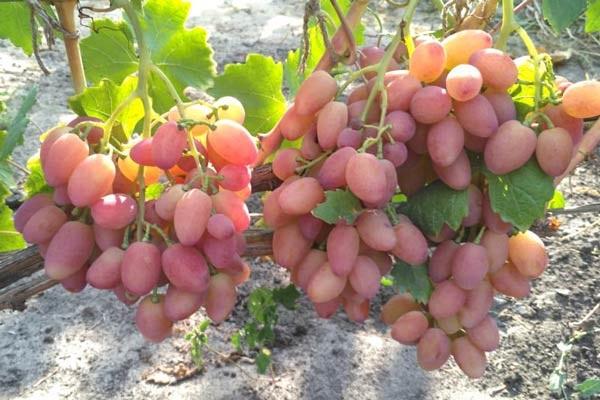
Conclusion
Angelica is considered a common grape variety cultivated by many winegrowers. However, before planting a plant, you must familiarize yourself with its description, as well as with recommendations for further planting.
